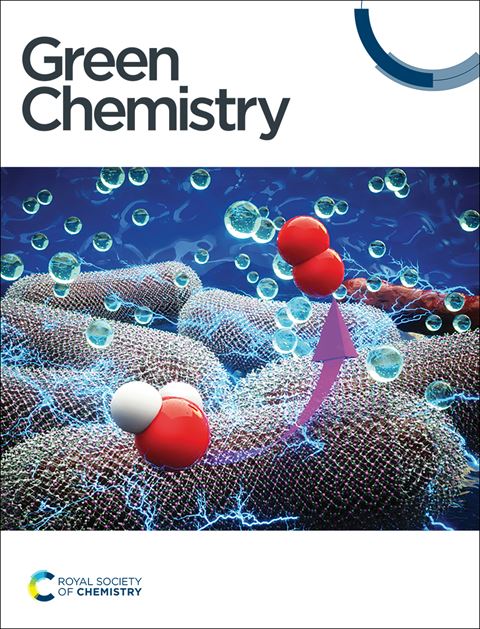Selective catalytic depolymerisation of C-lignin into ethylcatechol using commercial Pd/C under hydrogen-free conditions†
IF 9.3
1区 化学
Q1 CHEMISTRY, MULTIDISCIPLINARY
引用次数: 0
Abstract
The catalytic depolymerisation of catechyl lignin (C-lignin) represents a promising and sustainable approach for producing catechol monomers adorned with C3 side chains, but the selective production of ethylcatechol with a C2 side chain remains a significant challenge due to the intricate scission of vicinal C–O and C–C bonds. Herein, we demonstrate that Pd/C can effectively catalyse the cleavage of Cα–O, Cβ–O and Cβ–Cγ bonds in C-lignin under hydrogen-free conditions, resulting in the formation of ethylcatechol in a selective manner, with methanol acting as the primary hydrogen donor. By optimizing the reaction parameters, an impressive yield of 80.7 mol% of catechol monomers has been achieved, accompanied by a remarkable selectivity of 69% for ethylcatechol. Detailed investigations using model compounds suggest that a plausible reaction pathway involves the generation of caffeyl alcohol as a key intermediate by the synchronous cleavage of Cα–O and Cβ–O bonds in benzodioxane linkages, followed by hydrogenation, dehydrogenation and subsequent decarbonylation reactions, enabling the efficient production of ethylcatechol. This study provides a practical and scalable route for transforming renewable C-lignin biopolymers into high-value-added ethylcatechol under an N2 atmosphere, highlighting its potential for sustainable chemical production.
在无氢条件下,利用商业Pd/C选择性催化C-木质素解聚成乙基儿茶酚
儿茶酚木质素(c -木质素)的催化解聚是一种有前途的、可持续的生产C3侧链儿茶酚单体的方法,但由于邻近C-O和C-C键的复杂断裂,具有C2侧链的乙基儿茶酚的选择性生产仍然是一个重大挑战。在此,我们证明了Pd/C可以在无氢条件下有效催化C-木质素中Cα - o, Cβ - o和Cβ - Cγ键的裂解,导致以甲醇作为主要氢供体的选择性方式生成乙基儿茶酚。通过优化反应参数,使邻苯二酚单体的收率达到80.7 mol%,对乙基邻苯二酚的选择性达到69%。使用模型化合物的详细研究表明,一个合理的反应途径包括通过同步裂解苯二氧烷键中的c - α - o和c - β - o键来生成咖啡醇作为关键中间体,然后进行加氢、脱氢和随后的脱碳反应,从而有效地生产乙基儿茶酚。该研究为在N2气氛下将可再生c -木质素生物聚合物转化为高附加值的乙基儿茶酚提供了一条实用且可扩展的途径,突出了其可持续化学生产的潜力。
本文章由计算机程序翻译,如有差异,请以英文原文为准。
求助全文
约1分钟内获得全文
求助全文
来源期刊

Green Chemistry
化学-化学综合
CiteScore
16.10
自引率
7.10%
发文量
677
审稿时长
1.4 months
期刊介绍:
Green Chemistry is a journal that provides a unique forum for the publication of innovative research on the development of alternative green and sustainable technologies. The scope of Green Chemistry is based on the definition proposed by Anastas and Warner (Green Chemistry: Theory and Practice, P T Anastas and J C Warner, Oxford University Press, Oxford, 1998), which defines green chemistry as the utilisation of a set of principles that reduces or eliminates the use or generation of hazardous substances in the design, manufacture and application of chemical products. Green Chemistry aims to reduce the environmental impact of the chemical enterprise by developing a technology base that is inherently non-toxic to living things and the environment. The journal welcomes submissions on all aspects of research relating to this endeavor and publishes original and significant cutting-edge research that is likely to be of wide general appeal. For a work to be published, it must present a significant advance in green chemistry, including a comparison with existing methods and a demonstration of advantages over those methods.
 求助内容:
求助内容: 应助结果提醒方式:
应助结果提醒方式:


